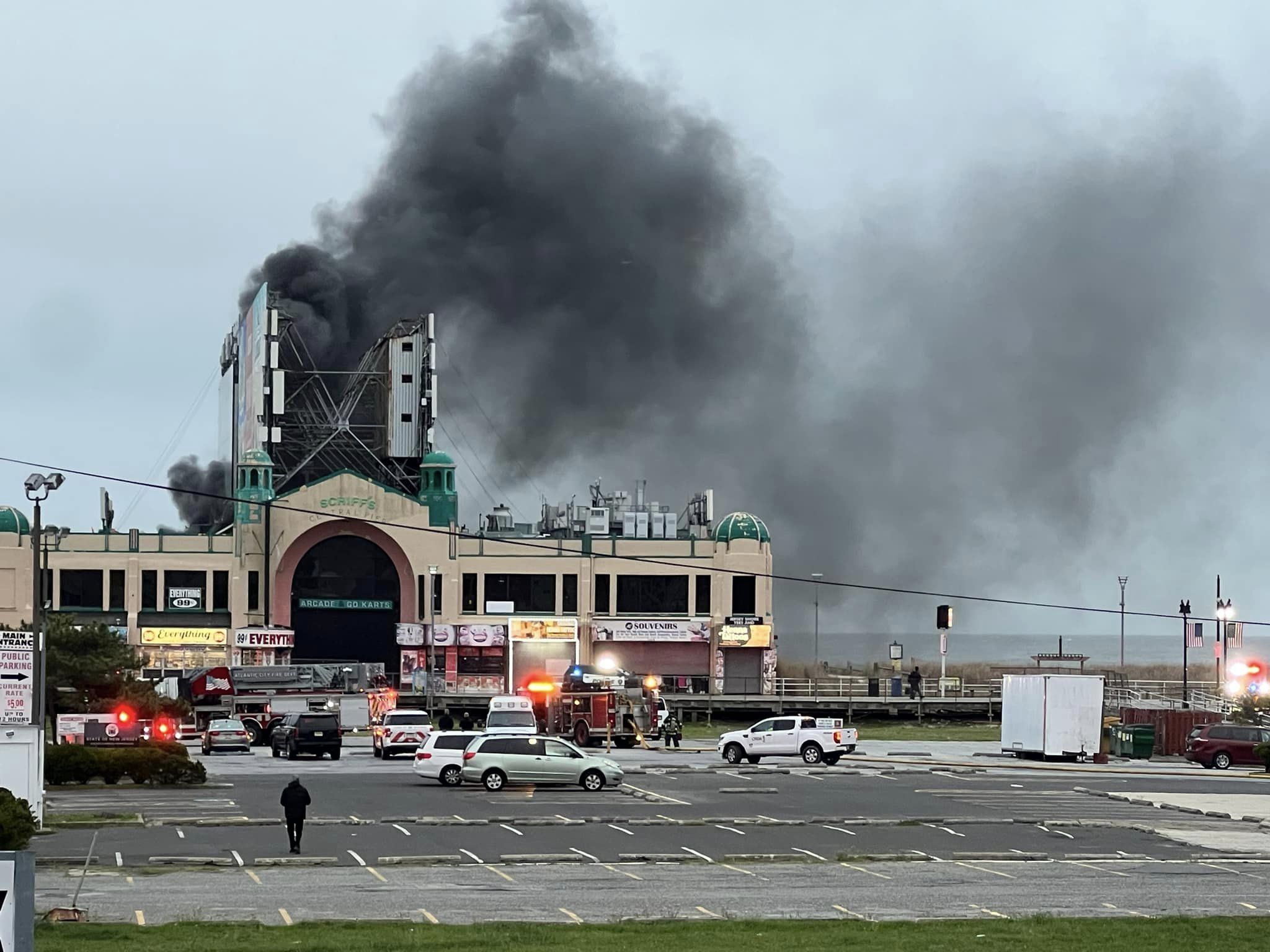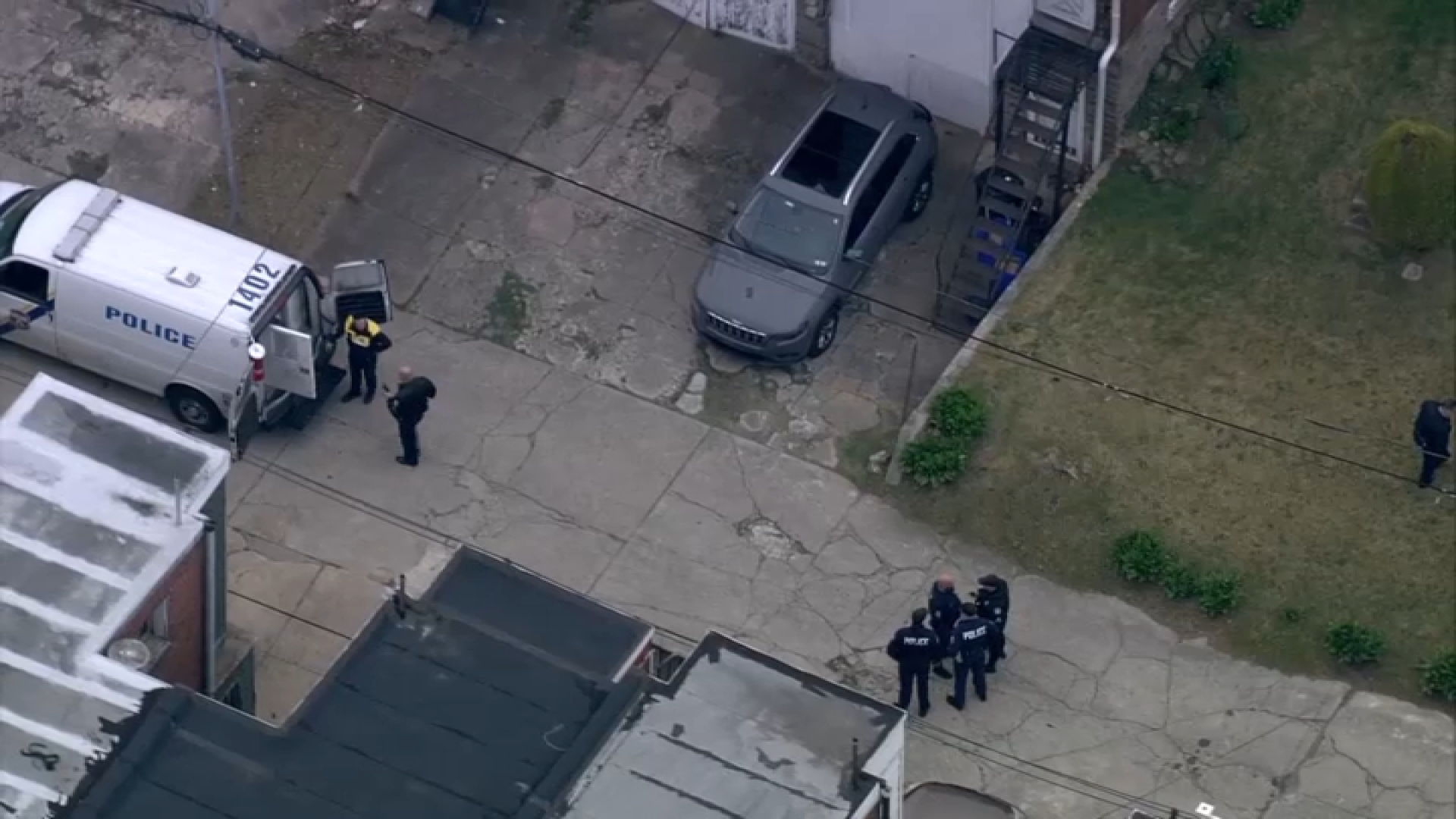Hood Cemetery historian Eugene Stackhouse has a few fun facts about William Hood, the man who paid for the ornate 1850 wall dividing the grounds from Germantown Avenue, and Stackhouse was ready to share with a special tour group exploring Germantown's famous graveyards on Saturday.
Hood was born in Philadelphia, but he died in Paris in 1850. That was before Americans or Europeans were doing much embalming as we know it today, so Hood's body was shipped home to Philly in a giant cask of brandy.
To this day, he lies just inside the keyhole-shaped gateway to the cemetery.
"As far as I know, he's still in brandy down there," Stackhouse said.
A Perfect Day for Cemetery-Seeing
Tour organizers including Concord School House president John Pollack, Germantown Mennonite Historic Trust executive director Alison Shiloh Wear and Historic Fair Hill executive director Brandi Levine said Historic Germantown's Saturday "Waking the Dead" tour was the first ever to connect four Germantown Avenue cemeteries in one dedicated bus trip.
Local
Breaking news and the stories that matter to your neighborhood.
It was a gray, chilly, drizzly day — perfect, attendees agreed, for wandering through gravesites.
Accompanied along the way by cookies, cider, coffee and hot chocolate courtesy of High Point Café, the tour began at 1 p.m. beside the Concord School House with the Upper Burying Ground, near the corner of Washington Lane and Germantown Avenue.
The grounds for the cemetery were designated in 1692, within a decade of Germantown's founding. That meant founders were aware of "the necessities of life as well as of death," Pollack said in his introduction to the grounds.
The Upper Burying Ground
Notable denizens of the Upper Ground include Cornelius Teisen, whose grave (the oldest there) dates from 1716.
Pollack also shared notes from centuries of cemetery records, like the 1818 interment of "A stranger from England [who] died of drinking cold water, it being very hot weather."
Pollack said the "entirely civic space" (i.e., no religious affiliation) may actually have as many as 1,300 graves, most of them lost or unmarked, and that the last headstone was placed in 1912.
He also told the cemetery's "most difficult story": The fact that people of different races were buried side by side until a 1766 resolution from the graveyard trustees excluded all "strangers, Negroes, and Mulattos."
This decision gave rise to the Bowman's Lane grounds, where African-American residents were buried — still the site of controversy now, with the demolition of the modern-day Queen Lane apartment complex there.
The Mennonite Meetinghouse
The tour, which included about 30 people, moved on by bus to the cemetery of Germantown's Mennonite Meeting House.
Wear welcomed the tour with a brief history of the group's Anabaptist roots, explaining that some tombstones are inscribed in German instead of English; these were "the Germans who settled Germantown."
Notable folks resting here include the Rittenhouse and Keyser families. The Meetinghouse itself, which dates to a log cabin first built in 1708, now hosts the table where America's first anti-slavery petition was signed in 1688.
The Lower Burying Ground
From there, the tour boarded the bus again for a stop at Hood Cemetery, formerly known as the Lower Burying Ground, which predates the Upper Ground by just one month.
Stackhouse, enthusiastically met by the tour's many history buffs, pointed out some of the cemetery's highlights, including the former site of British Revolutionary War General James Agnew's grave.
Agnew was shot in the Battle of Germantown in 1777, died at Grumblethorpe and rested briefly in the Lower Burying Ground until the retreating British — fearing that Agnew's body would be desecrated by angry Germantowners — relocated the body to Broad Street's de Benneville Cemetery.
The last burial here took place in 1964, Hood board member Mark Sellers added.
He said that group's current mission is honoring the graves there as well as maintaining a "green space" for meditation and memory. He noted that a lot of the site's vegetation and landscape has been unaltered since the 1680's.
Fair Hill cemetery
Finally, the group continued to Historic Germantown's newest member site: Historic Fair Hill, located a few blocks east of Broad Street.
Brandi Levine, the site's executive director, shared some of the history of the site, which was founded in 1703 as a grant of land to local Quakers from George Fox. She noted Quakers' "very pragmatic view of corporeal remains."
Many graves were actually located outside the current grounds, but were "tilled under" when part of the site was purchased by a farmer. Cars drive over the lost bodies now.
Levine explained that the site's uniformly low gravestones — none more than 18 inches high — reflect Quaker belief in equality for all, in life as well as death.
The Fair Hill site, recently revitalized after years in drastic decline, is a treasure trove of Philly's abolitionist and women's rights history, including the graves of James and Lucretia Mott and Robert Purvis.
The Quaker site is also notable for its 23 Civil War veterans, who, according to Levine, "truly wrestled with their conscience" to enlist for the Union despite the pacifism of their faith.
Graveyard fellowship
Attendees were enthusiastic about the experience.
Joyce Homan, a South Philly resident and the executive director of the Genealogical Society of Pennsylvania, said the tour was a personal, as well as professional, interest.
"A good day for me is being in a cemetery," she said.
The like-minded group of jovial historic travelers also included Roxborough residents Janet and Joseph Wilson, who took the tour to celebrate their fifth wedding anniversary.
They especially enjoyed hearing the story of Henry "Box" Brown, an escaped slave who shipped himself in a wooden box from Virginia to Purvis's Philadelphia office — a three-day journey.
Allison Kelsey, attending with her husband Mike Kreutzer, came from Center City and appreciated "the fellowship along the way" that the bus tour allowed.
Levine and Wear agreed that the tour's bus-ride format was a success.
Wear said a Historic Germantown shuttle bus from Old City, during the Germantown sites' May through October Second Saturday hours, "would be a great starting place."
Tour organizers said Historic Germantown's Saturday "Waking the Dead" tour was the first ever to connect four Germantown Avenue cemeteries in one dedicated bus trip.



